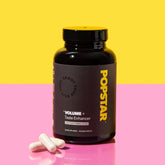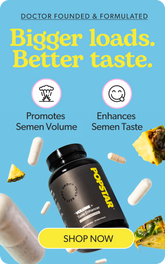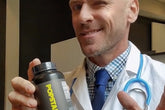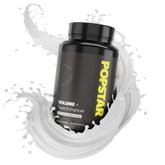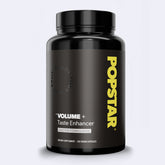The orgasm phase is one of the most studied components of the human sexual response cycle, particularly in men, due to its strong connection with ejaculation, pelvic muscle contractions, and neurochemical release. This article explains the orgasm phase in a clinical, educational, and non‑graphic way, focusing on physiology, health considerations, emotional aspects, and men’s sexual wellbeing.
Table of Contents
- Definition and Overview
- Quick Facts
- Understanding the Orgasm Phase in Men
- Physiology and Mechanisms
- Psychological and Emotional Factors
- Orgasm vs. Ejaculation
- Benefits of the Orgasm Phase for Men’s Health
- Risks, Challenges, and Common Concerns
- Consent, Communication, and Relationship Health
- Interaction with Medical and Psychological Conditions
- When to Seek Professional Help
- FAQ
- References and Further Reading
- Disclaimer
Definition and Overview
The orgasm phase refers to the peak of sexual arousal within the human sexual response cycle. In men, the orgasm phase typically includes rhythmic contractions of the pelvic floor and a sudden release of sexual tension. It is often closely linked to ejaculation, but the two processes are not identical. The orgasm phase in men is influenced by physical stimulation, psychological arousal, hormonal activity, and neurological signaling.
Key takeaways:
- The orgasm phase is the climax of the sexual response cycle.
- In men, orgasm usually occurs alongside ejaculation but can happen independently.
- Neurochemical release during orgasm affects mood, bonding, and relaxation.
- The orgasm phase is shaped by physical, psychological, and relational factors.
- Variations in orgasm intensity and timing are common and normal.
- Understanding the orgasm phase can help improve sexual health and communication.
- Men can experience orgasm difficulties linked to stress, medication, or health conditions.
- Safe, consensual sexual activity supports healthy sexual function.
Quick Facts
| Aspect | Summary |
|---|---|
| Definition | The peak period within the sexual response cycle marked by release of tension |
| Typical Duration | A few seconds for most men |
| Key Mechanisms | Pelvic muscle contractions, nerve signaling, neurochemical release |
| Common Associations | Ejaculation, pleasure, emotional release |
| Influencing Factors | Stress, arousal level, communication, health conditions |
| Health Benefits | Stress relief, cardiovascular effects, emotional bonding |
| Risks | Performance anxiety, premature ejaculation, pain, anorgasmia |
Understanding the Orgasm Phase in Men
The orgasm phase in men represents an involuntary physiological process characterized by peak stimulation. Although often described in terms of pleasure, the underlying process is primarily neurological and muscular. Men generally describe this phase as a rapid and uncontrollable release of tension followed by a sense of relief.
Men experience orgasm differently depending on age, health, relationship dynamics, and mental state. Some men feel intense pelvic contractions, while others experience milder sensations. All variations can be normal.
Physiology and Mechanisms
The orgasm phase physiology is governed by sympathetic nervous system activation. Once arousal reaches a threshold, nerve pathways stimulate involuntary muscle contractions in the pelvic floor, prostate, vas deferens, and perineal muscles.
Physiological components include:
- Increased heart rate and breathing rate
- Muscle contractions in the pelvic floor
- Temporary loss of voluntary control in the pelvic region
- Rapid release of neurochemicals such as dopamine and oxytocin
These mechanisms help explain why orgasm is often described as relieving tension, bonding partners, or helping with relaxation afterward.
Psychological and Emotional Factors
Psychology plays a major role in the orgasm phase. Factors include:
- Stress levels
- Relationship satisfaction
- Body image
- Anxiety or performance pressure
- Past experiences or trauma
Research suggests many men who struggle with orgasm do so because of psychological barriers rather than purely physical issues.
Orgasm vs. Ejaculation
Although commonly linked, orgasm and ejaculation are distinct processes. Ejaculation refers to the physical expulsion of semen. Orgasm refers to the subjective peak of sexual pleasure. Most men experience both simultaneously, but they can occur independently.
Differences:
- Ejaculation is mechanical; orgasm is neurological.
- Men can occasionally experience orgasm without ejaculation.
- Ejaculation can occur without strong orgasm if stimulation is intense or rapid.
Understanding this distinction helps men better interpret symptoms such as delayed ejaculation or anorgasmia.
Benefits of the Orgasm Phase for Men’s Health
The orgasm phase provides several evidence‑supported benefits:
- Reduced stress through cortisol modulation
- Cardiovascular stimulation
- Improved mood via dopamine and endorphins
- Better sleep due to prolactin release
- Relationship bonding through oxytocin
Some research suggests regular orgasms may support prostate health, though evidence is mixed.
Risks, Challenges, and Common Concerns
Most men experience the orgasm phase without issues, but common concerns include:
- Premature ejaculation
- Delayed ejaculation
- Difficulty reaching orgasm
- Pain during orgasm
- Emotional guilt or shame
Factors contributing to problems include medication side effects, chronic stress, depression, anxiety, and long‑term relationship conflicts.
Risks vs. ways to reduce risk:
| Risk | Reduction Strategy |
|---|---|
| Pain during orgasm | Seek medical evaluation for prostate or pelvic issues |
| Premature ejaculation | Use behavioral strategies or consult a clinician |
| Anxiety | Learn grounding and communication skills |
| Erectile difficulties | Address cardiovascular or hormonal concerns |
Consent, Communication, and Relationship Health
Healthy sexual experiences require clear communication. Men may feel pressure to perform or reach orgasm quickly, but communication helps reduce misunderstandings.
Helpful strategies:
- Discuss expectations outside sexual moments
- Use clear, non‑judgmental language
- Normalize differences in timing and intensity
These practices reduce anxiety and improve satisfaction.
Interaction with Medical and Psychological Conditions
The orgasm phase can be affected by:
- Diabetes
- Cardiovascular disease
- Low testosterone
- Medication for depression or blood pressure
- Pelvic nerve damage
Psychological conditions such as anxiety, depression, or trauma histories also influence orgasm ability. Men dealing with chronic stress often report reduced orgasm intensity.
When to Seek Professional Help
Men should seek help when:
- Pain occurs consistently during orgasm
- Orgasms are extremely difficult or impossible to achieve
- Ejaculation problems interfere with wellbeing
- Emotional distress or relationship strain develops
Urologists, primary care physicians, and certified sex therapists are common sources of support.
FAQ
What does the orgasm phase mean in men?
The orgasm phase in men is the peak of sexual arousal characterized by pelvic contractions and intense sensation. It is typically associated with ejaculation but remains a separate process.
Is the orgasm phase normal to vary between men?
Yes. Variation is extremely common. Some men have strong contractions and intense sensation, while others experience milder orgasms.
Can the orgasm phase occur without ejaculation?
Yes. Men can experience non‑ejaculatory orgasms due to pelvic floor activation without release of semen.
Does stress affect the orgasm phase?
Stress strongly impacts orgasm by interrupting arousal signaling and causing tension that disrupts focus.
Can medication interfere with orgasm?
Many medications such as SSRIs can cause delayed orgasm or difficulty climaxing.
Does age affect the orgasm phase?
Yes. Men often experience longer arousal periods and reduced intensity with age, which is normal.
Can the orgasm phase help reduce stress?
Neurochemical release during orgasm can reduce stress and promote relaxation.
Can orgasm difficulties indicate medical problems?
Persistent problems may signal hormonal changes, nerve issues, or cardiovascular conditions.
Is pain during orgasm normal?
Occasional discomfort can occur, but recurring pain should be evaluated.
How does the orgasm phase relate to sexual satisfaction?
Although important, satisfaction also depends on emotional connection, communication, and comfort.
Can the orgasm phase be improved naturally?
Stress reduction, better sleep, communication, and consistent exercise may improve orgasm quality.
Can anxiety cause premature ejaculation?
Yes. Anxiety increases sympathetic activity, which may shorten the time to orgasm.
How can men talk to partners about orgasm issues?
Use calm, non‑blaming language and focus on collaboration rather than performance.
Should men worry if orgasms occasionally feel weaker?
No. Stress, fatigue, and timing variations commonly affect intensity.
When should a man see a doctor about orgasm concerns?
If orgasm becomes painful, impossible, or creates emotional distress.
References and Further Reading
- National health service guidance on men’s sexual health
- Major urology association resources on ejaculation and orgasm
- Sex therapy organizations focused on sexual response education
- Peer‑reviewed literature on sexual response cycle physiology
- Mental health organizations covering anxiety and sexual function
Disclaimer
This article is for informational and educational purposes only and does not constitute medical or mental health advice. It is not a substitute for speaking with a qualified healthcare provider, licensed therapist, or other professional who can consider your individual situation.
